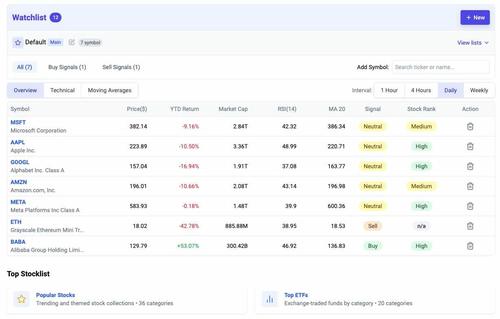Qualcomm’s Bid for Intel: A Game-Changer for the Semiconductor Industry?
Qualcomm’s reported approach to acquire Intel has sent ripples through the semiconductor industry, significantly impacting the stock prices of both companies and raising questions about the future landscape of chip manufacturing. This report delves into the ramifications of this potential acquisition, examining its effects on Qualcomm, Intel, and other key players in the semiconductor market. By analyzing stock movements, financial performance, and strategic implications, this report aims to provide a comprehensive understanding of the potential outcomes of this unprecedented move.
Introduction
Stock Market Reactions
Intel’s Stock Surge
Following the news of Qualcomm’s takeover approach, Intel’s shares experienced a notable increase. According to CNBC, Intel’s stock rose by approximately 3%, reaching $21.87. This surge comes despite a challenging year for Intel, with its stock down 56% and a market valuation of around $93 billion. The rise in stock price reflects investor optimism about the potential benefits of the acquisition, including a possible turnaround in Intel’s fortunes.
Qualcomm’s Stock Decline
In contrast, Qualcomm’s shares fell by 2.9%, indicating investor concerns about the risks associated with the potential deal. Qualcomm, with a market cap of $184 billion, faces significant financial and strategic challenges in executing such a large acquisition. The decline in stock price suggests that investors are wary of the potential regulatory hurdles, integration challenges, and financial strain that could accompany the merger.
Financial Performance and Strategic Implications
Intel’s Struggles
Intel has faced significant financial and operational challenges in recent years. The company reported a loss of $1.6 billion in Q2 2024, a stark contrast to the $1.5 billion profit reported in the same period the previous year. Intel’s revenue has also been under pressure, with a notable 26% drop following disappointing earnings in August 2024. The company’s market value has plummeted from a peak of $290 billion in 2020 to approximately $90 billion, making it a potential acquisition target.
Qualcomm’s Strategic Motives
Qualcomm’s interest in acquiring Intel appears to be driven by strategic motives to diversify its product portfolio and enhance its competitive position. Qualcomm, known for its expertise in mobile chips, seeks to combine its strengths with Intel’s dominance in PC and server processors. This merger could create a formidable competitor to Nvidia in the AI chip market and enhance U.S. chip manufacturing capabilities amid rising competition from Asia.
Potential Benefits and Challenges
The potential benefits of the merger include increased market share, enhanced product offerings, and improved manufacturing capabilities. However, the deal also faces significant challenges, including regulatory scrutiny, integration complexities, and financial strain. Qualcomm may need to raise capital or structure the deal as a stock swap due to its limited cash reserves of about $23.33 billion. Additionally, the merger could face antitrust issues, particularly in the U.S. and China, where both companies have previously seen deals blocked by regulators.
Impact on Other Chip Stocks
TSMC and MediaTek
The potential Qualcomm-Intel merger could have varying impacts on other chip manufacturers. According to TrendForce, the impact on TSMC (Taiwan Semiconductor Manufacturing Company) is expected to be minimal. Analysts suggest that even if Qualcomm acquires Intel, it would not reclaim orders currently outsourced to TSMC due to Intel’s weaknesses in its foundry unit. However, MediaTek, Qualcomm’s main rival, could face increased competition in sectors such as AI PCs and automotive platforms.
AMD and Its Supply Chain
The merger could also negatively impact AMD’s supply chain in Taiwan, which includes companies like ASMedia, known for high-speed controller ICs. AMD, a key competitor to both Intel and Qualcomm, could experience heightened competitive pressures and disruptions. The combined entity of Qualcomm and Intel would hold substantial power in multiple chip markets, potentially influencing chip prices and market dynamics.
Regulatory and Antitrust Concerns
U.S. and China
The potential merger faces significant regulatory hurdles, particularly in the U.S. and China. Both countries have stringent antitrust regulations, and the combined entity’s substantial market power could attract scrutiny. In the U.S., the Federal Trade Commission (FTC) and the Department of Justice (DOJ) would likely examine the deal for potential anti-competitive effects. In China, where both companies have significant operations, regulatory authorities have previously blocked deals involving U.S. tech companies.
Potential Divestitures
To address regulatory concerns, Qualcomm may need to divest certain assets or business units. For example, Qualcomm’s ability to produce Intel-designed x86-64 chips could be hindered by existing patent agreements with AMD. Additionally, Qualcomm may need to sell off parts of Intel’s business to comply with antitrust regulations. These divestitures could complicate the integration process and reduce the potential benefits of the merger.
Future Outlook and Strategic Considerations
Intel’s Strategic Shift
Intel’s CEO, Pat Gelsinger, has outlined a strategy to invest over $100 billion by 2029 to build chip factories across four states, aiming to gain a foothold in the AI sector and mitigate reliance on TSMC. This strategic shift reflects Intel’s commitment to its PC business and its efforts to regain market share. However, the company’s ongoing financial struggles and market share losses pose significant challenges.
Qualcomm’s Growth Prospects
For Qualcomm, the potential merger represents a transformative opportunity to diversify its product portfolio and enhance its competitive position. By combining its mobile chip expertise with Intel’s strengths in PC and server processors, Qualcomm could create a unique range of AI processors and other advanced technologies. However, the company must navigate significant financial and regulatory challenges to realize these benefits.
Industry Consolidation
The potential merger could lead to further consolidation in the semiconductor industry, impacting competition and market dynamics. A combined Qualcomm-Intel entity would hold substantial power in multiple chip markets, potentially influencing chip prices and innovation. This consolidation could also prompt other companies to pursue mergers and acquisitions to remain competitive, further reshaping the industry landscape.
Conclusion
The reported takeover approach by Qualcomm to acquire Intel has significant implications for the semiconductor industry. While Intel’s stock has surged on the news, Qualcomm’s shares have declined, reflecting investor concerns about the risks and challenges associated with the potential deal. The merger, if realized, would be the largest in semiconductor history and could transform the competitive landscape. However, the deal faces significant regulatory hurdles, financial strain, and integration complexities. The future of Qualcomm, Intel, and other chip stocks will depend on how these challenges are navigated and the strategic decisions made by the companies involved.


